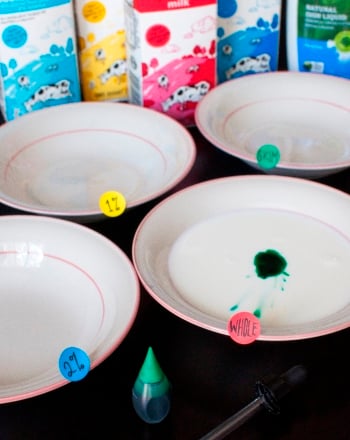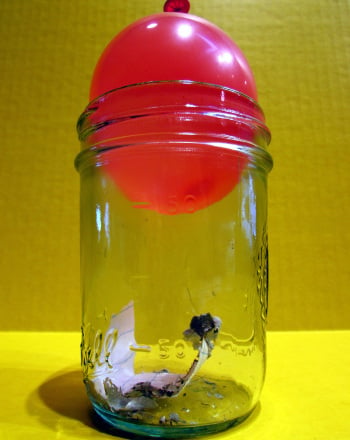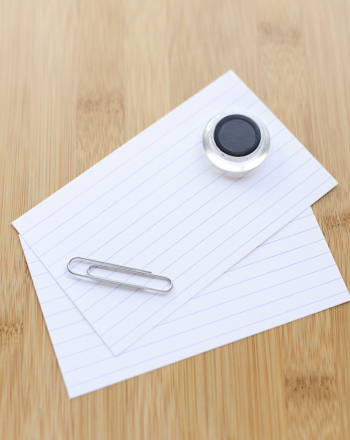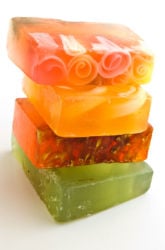Science project
Erosion Experiment
Huff, puff and blow as hard as you can—do you think you can blow down a sand castle with your mighty breath? Blowing air erodes—wears away—sand and dirt. In Three Little Pigs, houses of straw or twigs were no match for the Big Bad Wolf's strong lungs. Do you think a house made of sand or mud could hold up to wind or water? Let's find out in this erosion experiment.
In some parts of the world, houses are still made from mud and sand, which makes them easier to knock down than homes made of brick and stone. To understand how these materials can (and should) be used to make homes, you'll need to explore how they stand up to the elements.
Problem:
How does erosion affect structures made of sand and soil?
Materials:
- Sand
- Soil
- Garden hose
- Plastic cups
- Battery-operated portable fan
- Notebook
- Pencil
- Stopwatch (optional)
Procedure:
- Before you start your erosion experiment, take a look at your ingredients. How does the sand feel? How does the soil feel? Do sand and soil stick together easily, or fall apart? Record any observations—things you see—in your notebook.
- Look over your notes, and make a guess about what you think will happen to your soil structure, and what will happen to your sand structure, when you try to knock them down with wind or water. Which "castle" will last longer? Write your guess—called a hypothesis—in your notebook.
- Take your ingredients to a hard surface, like concrete or asphalt. These smooth surfaces will allow you to see exactly how the water and wind affect your structures.
- Create mud by mixing some soil with water. Dirt and soil may look the same, but technically they aren't. Soil consists of sand, silt, clay, minerals, water, air and organic material. And you thought it was just dirt, didn't you?
- Create wet sand by mixing sand with just enough water to make it stick together—like sand on the beach that you use to make sand castles.
- Use a plastic cup to make a structure out of the wet soil; maybe it'll be a castle, maybe just a lot of cups turned over in your own design. Be creative and make your structures just the way YOU like them.
- Repeat Step 6 with the wet sand.
- Next, make similar structures with dry soil and dry sand, for a total of four structures: one made from muddy soil, one dry soil, one wet sand, and one dry sand.
- Now that your creations exist, it's time to see which stand up to wind and water. Use your battery-operated fan to blow air on the four structures. Remember, do NOT use an electric fan—mixing water and electricity is dangerous, so make sure you have the right fan before starting.
- What happens to each of your structures? Draw a picture or write what happened in your notebook.
- Take a garden hose and drop it about two feet away from your structures. Turn on the water for about 30 seconds, and then turn it off. Draw a picture or write what happened in your notebook.
Results:
The wind from the fan should have blown away the individual particles of your dry sand structure easily. While all of the structures probably ended up washed away by wind or water, the structures made with soil should have been stronger than the structures made with sand.
Why?
Dry sand is like dry sugar. It piles up, but wind and water wash it away quickly, because the individual grains of sand don't stick to each other. Wet sand sticks together when combined with just the right amount of water. Too much water washes it away, but it takes more effort than the dry sand because water fills in the space between the grains enough to make the grains stick to each other. You will find that it takes a fan on higher settings to erode, or gradually wear away the sand.
Dry soil holds together better than dry sand. When it's wet, the organic matter and minerals fill the gaps in the soil to hold it tightly together. It takes a strong force (push) of water and wind to knock down a soil castle. This is why ancient Egyptians added straw to their mud when they made bricks for their homes. They molded the mud and straw, allowing them to dry in the sun, becoming bricks. Bricks are hard. Structures, like homes built today with bricks, are harder to tumble. Remember what happened in the Three Little Pigs?
Now that you've learned about sand and soil with this erosion experiment, keep the science going by testing more elements. Make this project more challenging by recording the time it takes for the structures to erode away with a stopwatch. What would happen if both wind and water hit the castles at the same time? What if you placed your hose at an angle or held it in the air and sprinkled in on your castles? Being a scientist is all about guessing and testing!
Education.com provides the Science Fair Project Ideas for informational purposes only. Education.com does not make any guarantee or representation regarding the Science Fair Project Ideas and is not responsible or liable for any loss or damage, directly or indirectly, caused by your use of such information. By accessing the Science Fair Project Ideas, you waive and renounce any claims against Education.com that arise thereof. In addition, your access to Education.com's website and Science Fair Project Ideas is covered by Education.com's Privacy Policy and site Terms of Use, which include limitations on Education.com's liability.
Warning is hereby given that not all Project Ideas are appropriate for all individuals or in all circumstances. Implementation of any Science Project Idea should be undertaken only in appropriate settings and with appropriate parental or other supervision. Reading and following the safety precautions of all materials used in a project is the sole responsibility of each individual. For further information, consult your state's handbook of Science Safety.












